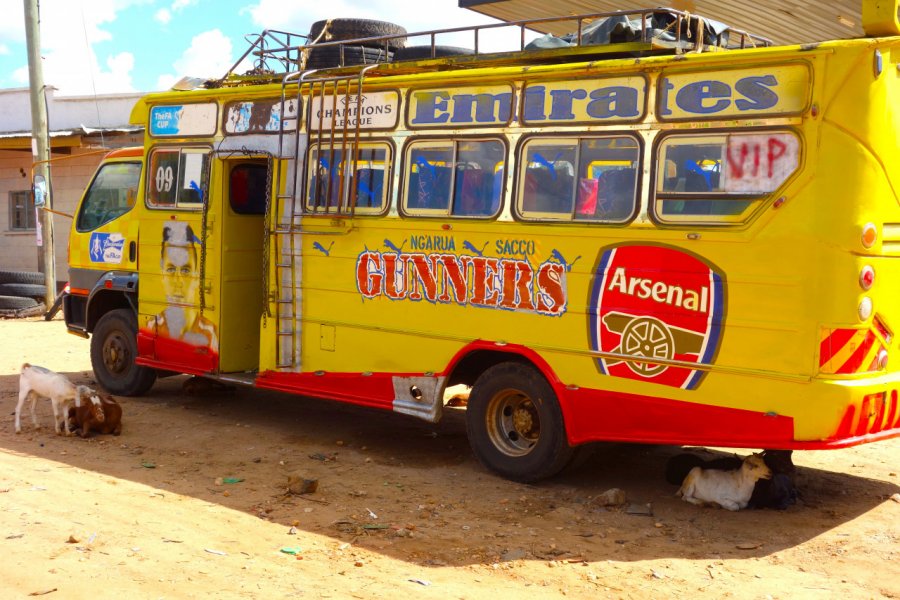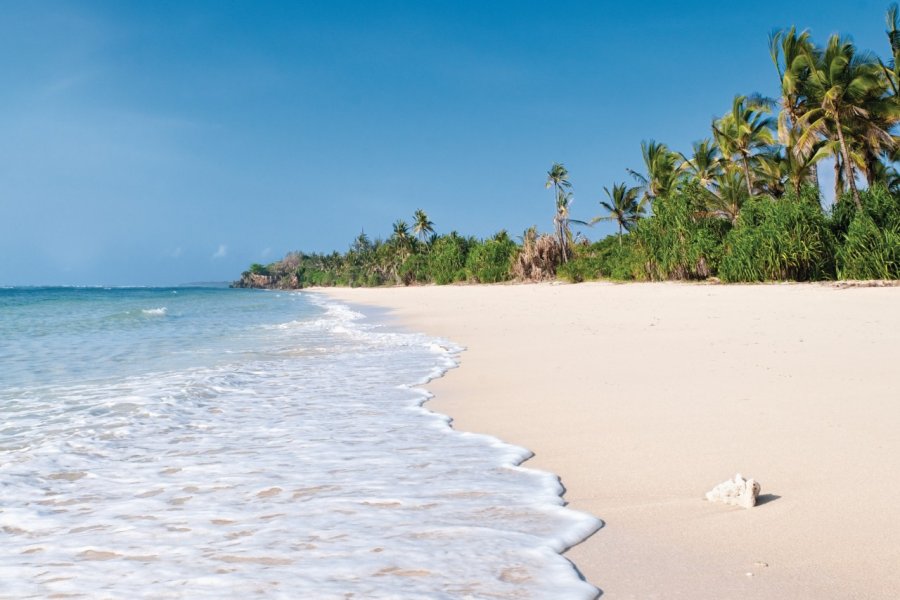Travel guide Kenya
The safari ("the journey" in Swahili) could only be born in Kenya. Wide open spaces embodied by the immense Maasai Mara reserve, paradisiacal beaches lined with coconut palms as in Diani Beach, but also luxuriant tropical forests, dune deserts, a glacier perched at 5,000 m on the summit of Mount Kenya, Kenya is an invitation to leave. A majestic setting to observe with your Kenya tour guide a plethora of wildlife in about sixty national parks and nature reserves. The "Big Five" animals (lion, leopard, elephant, rhinoceros, buffalo) are waiting for you but you should not forget all the others, on land, around the lakes as in Nukuru and Naivasha and in the marine reserves as in Kisite off Wasini Island, in the Indian Ocean. Traveling in Kenya also means meeting the local populations and their fascinating ethnic diversity, in Nairobi, Lamu, Mombassa or in the Great Rift Valley province, the official cradle of humanity.
What to see, what to do Kenya?
-
Book an activity
-
Customized travel
- The most beautiful cities Kenya
When to go Kenya ?
The best times to go on safari in Kenya are in January and February, and August-September. These are the times when the great wildebeest migration of millions of animals between the Masai Mara and the Serengeti plains takes place, approximately between July and September in one direction, and December-January in the other. Ideally, one should avoid the two rainy seasons, the long one between April and June, and the short one between November and December, during which some roads are impassable and the animals less visible in the national parks.
Suggested addresses Kenya
Travel Kenya
-
Find a hotel
-
Car Rental
-
International e-SIM package
-
Find a local agency
Une semaine au Kenya suffit à réaliser un premier safari en Afrique dans des conditions de rêve. Il est même possible de faire une petite extension sur l'une des plages paradisiaques de la côte. Mais qu’on se le dise, deux semaines c’est quand même mieux pour avoir un aperçu des principales richesses du pays, visiter Nairobi, les parcs d’Amboseli et de Maasaï Mara, la vallée du Rift et le lac de Nakuru, la réserve de Samburu, celle de Tsavo, la région du Mont Kenya, puis les plus belles zones de la côte swahilie : Mombasa, Diani, ainsi que Watamu et l’île de Lamu. Si l’on ne veut pas courir, on peut prendre plus de temps en certains endroits, et par exemple préférer la côte sud ou nord, le Mont Kenya ou les Aberdares, Samburu ou Tsavo. Trois semaines permettent d’approfondir ces lieux et d’entreprendre des excursions plus exigeantes en temps, notamment pour l’ascension du Mont Kenya ou la découverte du lac Turkana.
Find unique Stay Offers with our Partners
How to go Kenya
How to go alone
There are direct flights to Nairobi and Mombasa. It is not allowed to enter national parks without a guide for safety and environmental protection reasons, so you will always have to go through a local agency, large or small. Solo, you can go further off the beaten track and into the main reserves and venture out to Lake Victoria or the Rift Valley, for example.
How to go on a tour
Safaris in the Maasai Mara, Amboseli, Tsavo or Lake Naivasha reserves are on the menu of all travel agencies. It is the means of transportation that differs from one safari to another, in 4X4, on foot, on horseback, on motorcycle or even in a hot air balloon. Accommodation during the safaris is in camps or even lodge in the reserves or near them. Many agencies also offer to conclude the trip with a stay on the beaches of the Indian Ocean, at Diani Beach or towards Mombassa.
How to get around
It is easy to get around in southern Kenya and to cross the country from east to west. There are numerous air links, a fairly dense road network, a train linking Mombasa and Kisumu via Nairobi and reliable and punctual buses serving all towns. However, travel in the northern regions is much more difficult. Public transport is almost non-existent and the condition of roads and tracks is often deplorable, even in the dry season.
Featured articles Kenya
Discover Kenya
"I had a farm in Africa, at the foot of the Ngong Hills", so begins Karen Blixen's famous autobiographical novel, The African Farm (adapted for the screen by Sydney Pollack in 1985, in Out of Africa). And the story takes place in Kenya. Four decades later, this cult film continues to fuel the imagination. Kenya, the kingdom of safari, with over 60 parks and reserves, boasts grandiose, varied landscapes and abundant, easily observed wildlife. But it's also a history that dates back to the origins of mankind, a fascinating ethno-cultural diversity (no fewer than 40 ethnic groups and over 60 vernacular languages), preserved ancestral traditions, one of the most dynamic economies in sub-Saharan Africa, quality infrastructures, a multitude of little corners of paradise... The journey begins, discover Kenya!
Pictures and images Kenya
The 12 keywords Kenya
1. Bandas
These are very basic bungalows with makuti (woven palm leaf) roofs, which can be rented in the parks. They are inexpensive and often have a small, fully-equipped kitchen. Some lodges have taken inspiration from this type of traditional dwelling, to give a more authentic appearance to their tourism offering.
2. Big Five

Literally the "Big Five", the Big Five are the savannah's most sought-after wild animals. For hunters, this term originally referred to Africa's most feared and respected mammals. The lion, elephant, buffalo, leopard and rhinoceros reign supreme in the animal kingdom.
3. Boda-Boda
Boda-boda" were originally used for border-to-border transfers. Today, they're everywhere. Also known as "piki-piki", both refer to motorcycle cabs. They're easier to find than a cab or matatu. Only to be considered for short distances.
4. Dhows
These small triangular-sailed boats can be seen sailing along the Kenyan and Tanzanian coasts. For centuries, these dhows linked Africa, the Persian Gulf and India. Today, very few of them make these long journeys. These small sailing boats have retained their charm, and a dhow cruise is still an experience.
5. Ethnicities

There are more than 40 ethnic groups in Kenya. The main ones are the Kikuyus, the majority ethnic group, the Luos and the Luhyas, the Kalenjins and the Kambas, the Maasais... Kenya has more or less succeeded in forming a peaceful ethnic cohabitation since its independence in 1963. However, tensions arise during election periods.
6. Matatu

These are 14-seat minibuses, decorated and often overloaded, which provide urban and interurban travel at full speed. Each matatu has its own driver and its own driver, its own rules and its own atmosphere. All exuberance is permitted. These matatus are the object of a real cult. The regulars have their favorite.
7. Nyama choma
Traditionally, it's grilled goat's meat, but the term has come to refer to all kinds of wood-fired grills, simply eaten with salt and chilli. Nyama choma means "barbecued meat" in Kiswahili. On the street or in restaurants, this is a very popular speciality in Kenya.
8. Polé-Polé
In Swahili, "polé-polé" means "gently". It's the equivalent of "piano-piano" in Italy, "mora-mora" in Madagascar or "tipa-tipa" in Mauritius. On the Indian Ocean coast, where the pace seems slower and the atmosphere more relaxed than elsewhere, the expression is widely used... and you'll soon make it your own!
9. Swahili
Known as the cradle of humanity, Kenya is also one of the strongholds of Swahili culture. A blend of African and Arab origins, the country is still strongly imbued with this cultural heritage, which is showcased in the island city of Lamu and numerous other forts. Its official language, Kiswahili, is another legacy.
10. Tea
In this country, which has been producing some of the world's finest teas since 1925, tea is still drunk at all hours of the day. Kenya produces, exports and consumes mainly black tea. Full-bodied and aromatic, it is usually served very sweet with milk, and sometimes even with ginger.
11. Tusker
The national drink is beer (lager)! In fact, Kenya is said to be the biggest beer-drinking country in East Africa. It's quite good, low in alcohol content and inexpensive. It comes in different versions (export, lager, premium...). In bars, specify that you want a "cold" beer, as Kenyans often drink it lukewarm.
12. Ugali

Ugali is a staple of Kenyan cuisine. Its preparation is childishly simple: boil water and mix white maize or millet flour until you get a compact, rather bland and filling puree. Ugali is usually served as an accompaniment to other dishes, with the flavors on the side taking precedence.
You are from here, if...
You greet everyone you meet with a "Jambo"! It's a classic greeting for locals and foreigners alike. This way, no one will think you're speaking Swahili. And don't hesitate to use a few words in Swahili to thank (asante sana), greet (habari), say goodbye (kwaheri)... This little effort will be much appreciated by Kenyans.
You shake hands spontaneously with the person you meet, even if you don't know him or her. It's a gesture of trust and respect that you won't refuse. It's also customary to extend the handshake for some time during the conversation, a little less between a man and a woman. And, of course, Covid has changed this somewhat.
You are always calm and patient (especially with the police...). Placidity is a virtue in Kenya, and any irritation often tends to block the situation rather than resolve it.






























